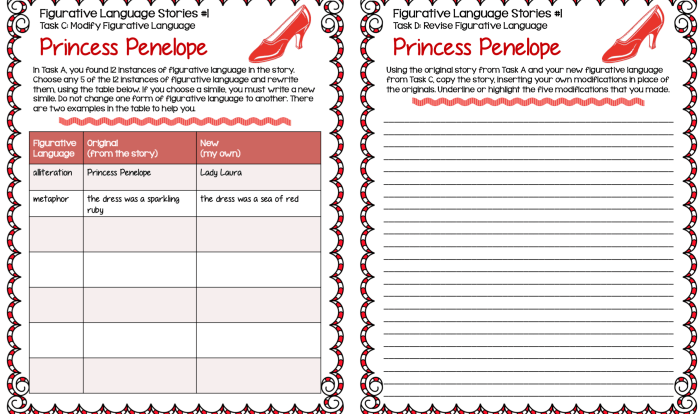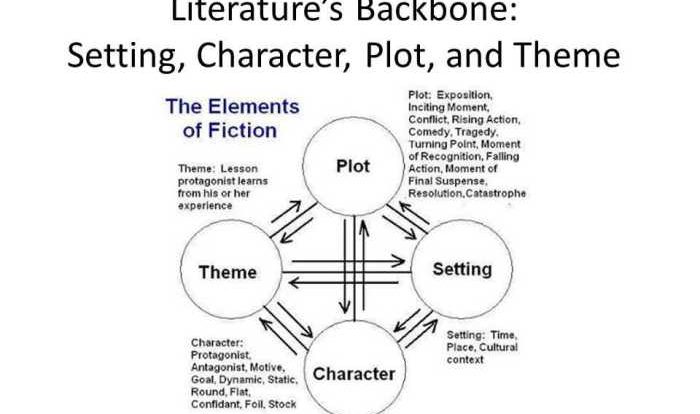Embarking on a literary expedition with “To Kill a Mockingbird Quiz Chapters 1-5,” we delve into a timeless classic that explores the complexities of human nature amidst the shadows of prejudice and the resilience of innocence. Join us as we dissect the profound characters, unravel the intricate symbolism, and uncover the enduring themes that have captivated generations.
Character Analysis
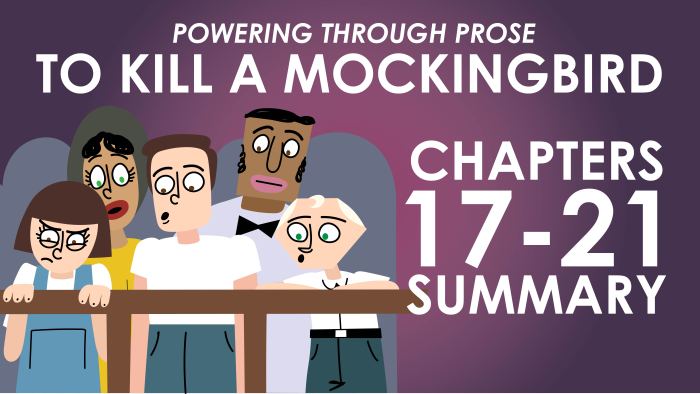
In Harper Lee’s To Kill a Mockingbird, the characters play pivotal roles in exploring the novel’s themes and conflicts. The protagonist, Scout Finch, serves as a narrator and witness to the events that unfold in the story. Her perspective provides a unique lens through which readers can understand the complexities of race, prejudice, and morality.
Scout Finch as Narrator
- Scout’s perspective as a child narrator offers a fresh and innocent viewpoint on the adult world.
- Her observations and interpretations highlight the hypocrisy and injustice prevalent in Maycomb society.
- Through her eyes, readers witness the transformation of her father, Atticus, from a respected lawyer to a target of ridicule and hate.
Atticus Finch as Moral Compass
- Atticus Finch embodies integrity, justice, and compassion.
- He stands up for what he believes in, even when it goes against the prevailing social norms.
- His unwavering principles guide Scout and Jem through the challenges they face.
Boo Radley’s Complexities
- Boo Radley is an enigmatic figure who represents both fear and compassion.
- His isolation and rumored deformity make him an object of fear and curiosity.
- However, his actions throughout the novel reveal a gentle and caring nature that challenges the prejudices of Maycomb society.
Setting and Symbolism
The setting of To Kill a Mockingbirdplays a significant role in shaping the story’s themes and conflicts. Maycomb, Alabama, is a small town steeped in tradition and prejudice.
Significance of Maycomb, Alabama, To kill a mockingbird quiz chapters 1-5
- Maycomb represents the Deep South during the era of racial segregation.
- Its oppressive social hierarchy and rigid racial divide serve as a microcosm of the larger societal issues explored in the novel.
- The town’s inhabitants are both complicit in and victims of the prejudices that permeate their community.
Symbolism of the Mockingbird
- The mockingbird symbolizes innocence, purity, and vulnerability.
- Its harmless nature makes it an easy target for those who seek to destroy it.
- The killing of the mockingbird serves as a metaphor for the loss of innocence and the triumph of evil.
Role of Nature
- Nature is a constant presence in the novel, often reflecting the emotional and moral states of the characters.
- The hot, humid summers represent the oppressive social climate of Maycomb.
- The Radley Place, with its overgrown vegetation and eerie atmosphere, symbolizes the isolation and mystery that surround Boo Radley.
Themes and Motifs
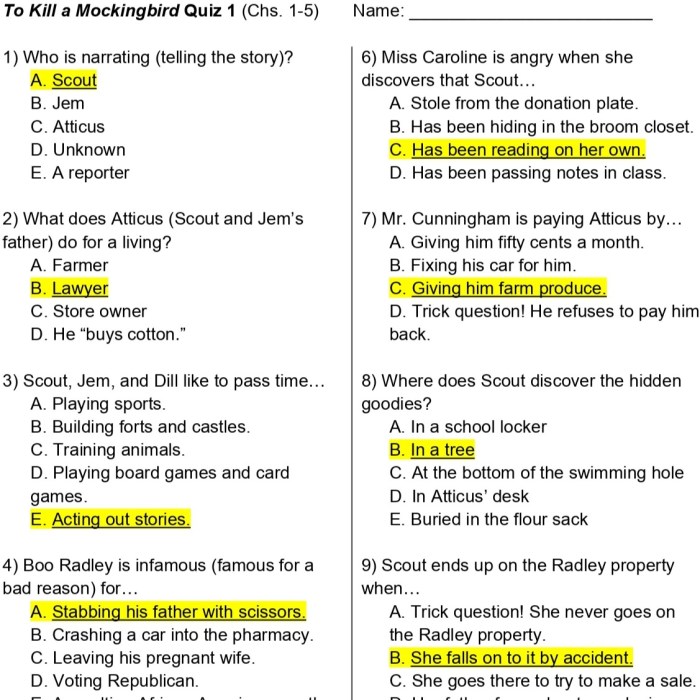
To Kill a Mockingbirdexplores a range of complex themes and motifs that resonate with readers of all ages.
Prejudice and Racism
- The novel confronts the pervasive racism and prejudice of the Deep South.
- The trial of Tom Robinson, a black man falsely accused of raping a white woman, exposes the hypocrisy and injustice of the legal system.
- Through the experiences of the Finch family, the novel challenges readers to question their own biases and prejudices.
Innocence and Loss
- The novel explores the loss of innocence and the transition from childhood to adulthood.
- Scout and Jem’s experiences with Boo Radley and the trial of Tom Robinson shatter their illusions about the world.
- The novel suggests that true innocence is not lost but transformed as individuals navigate the complexities of life.
Education and Empathy
- Education plays a crucial role in shaping the characters’ perspectives.
- Atticus’s lessons to his children about compassion, tolerance, and justice help them to challenge the prejudices of their community.
- Empathy, the ability to understand and share the feelings of others, is essential for breaking down barriers and promoting understanding.
Plot Summary (Chapters 1-5): To Kill A Mockingbird Quiz Chapters 1-5
The first five chapters of To Kill a Mockingbirdintroduce the main characters, establish the setting, and set the stage for the novel’s central conflicts.
- Scout and Jem Finch are introduced as siblings living in Maycomb, Alabama, with their widowed father, Atticus.
- The children are fascinated by the mysterious Boo Radley, who lives in an isolated house on their street.
- Atticus is appointed to defend Tom Robinson, a black man accused of raping a white woman.
- The trial exposes the deep-seated racism and prejudice within the Maycomb community.
- Despite Atticus’s eloquent defense, Tom Robinson is found guilty and sentenced to death.
Character Relationships
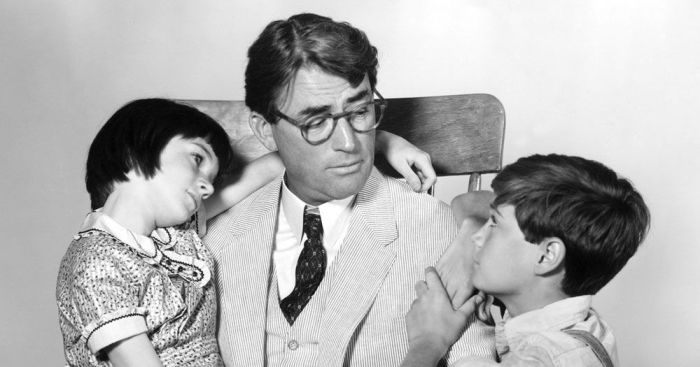
The relationships between the characters in To Kill a Mockingbirdare complex and dynamic, reflecting the social and racial tensions of the setting.
Relationship between Scout and Jem
- Scout and Jem are siblings who share a close bond.
- They often engage in playful banter and adventures together.
- Their relationship is tested as they navigate the complexities of their community.
Dynamic between Atticus and His Children
- Atticus is a loving and supportive father to Scout and Jem.
- He teaches them valuable lessons about morality, justice, and compassion.
- His children respect and admire him, even when they disagree with his views.
Complexities of Boo Radley’s Relationship with the Finch Family
- Boo Radley is initially seen as a mysterious and frightening figure.
- However, his actions throughout the novel reveal a kind and caring nature.
- His relationship with the Finch family develops gradually, challenging the prejudices and fears of the community.
Questions Often Asked
What is the significance of Scout Finch as a narrator?
As the novel’s protagonist and narrator, Scout Finch provides a unique and insightful perspective on the events unfolding in Maycomb. Her youthful innocence and unwavering determination allow her to witness and interpret the complexities of adult society with clarity and honesty.
How does the setting of Maycomb, Alabama contribute to the story?
Maycomb, Alabama serves as a microcosm of the American South during the 1930s, a time of deep-seated racial prejudice and social inequality. The novel’s exploration of these themes is inextricably linked to the specific historical and cultural context of Maycomb.
What is the symbolic significance of the mockingbird?
The mockingbird, a symbol of innocence and harmlessness, is frequently targeted for persecution and violence throughout the novel. This symbolism highlights the novel’s central themes of prejudice and the destruction of innocence in a society marred by injustice.
